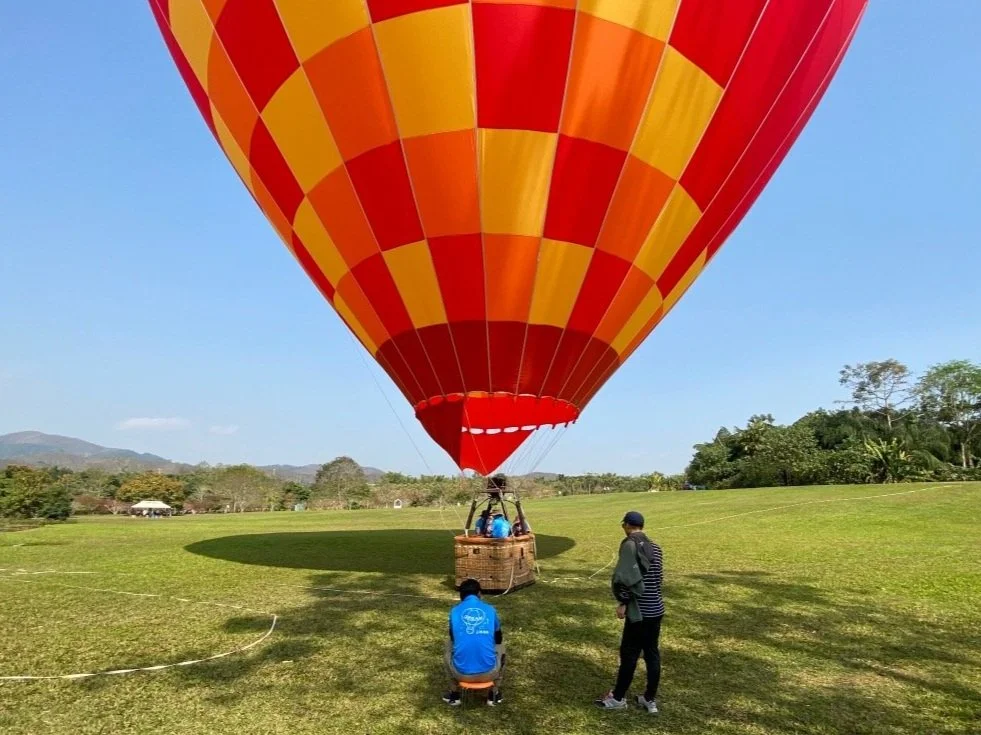Red lines and no go zones in Xishuangbanna
January 30, 2021
I LAND in Xishuangbanna on a January afternoon for an assignment: my mission is to find human encroachments into once-isolated ecosystems. This shouldn’t be difficult: the entirety of Xishuangbanna seems to consist of human encroachments into once-isolated ecosystems.
This “autonomous prefecture” doesn't appear to have changed very much since I was last here. The same dense clutter of tenements and retail spaces, the same bursts of forest, the same wildness on its edges, the same ethnic embellishments, the same gold spires and drooping gables and jagged eaves. The pace of construction is as intense as ever. On the lush banks of the Mekong, which runs through the administrative centre of Jinghong, I see the exoskeletons of new buildings wrapped in bamboo and green gauze. New restaurants are under construction. China is as unfinished here as it is everywhere else in the country.
Eventually, I head off to the Xishuangbanna Tropical Botanical Gardens to meet Alice Hughes, a conservation biologist. The car ride app Didi has suspended services to the area, presumably for COVID-19-related reasons, but a driver lurking at the entrance of the hotel is happy to take me.
The highways are carved in thick, richly biodiverse forest . There are stanchions of huge new highways planted in the hills. There are concrete supports by the roadside to prevent landslides. There are "protected zones" scattered throughout the district, fragmented and penned in.
We pass through the sprawling, stinking rubber plantations and I remember that the damage done here is not just the result of urbanisation, but also agriculture and the imposition of monocultures like rubber and coffee, as well as aggressive logging. Land in China is always at its very limits. There is so little breathing space. There's a sense that there are just too many people trying to profit from too little land.
We drive through the messy little pockets of human life, with the ramshackle hamlets and the mobile phone numbers scrawled in red paint on the crumbling walls of old workshops. We then wend through the Xishuangbanna National Nature Protection Zone, which is demarcated by signs on both sides of the road.
China’s so-called “ecological red line” scheme, which puts nature out of bounds from human encroachment, marks something of a change in the country’s attitude towards its ecological health, but the underlying antagonism between humanity and nature seems to remain unchanged. Previously, habitats were destroyed; now, they are walled off, kept at arms’ length.
Alice and I met at a café just opposite the Xishuangbanna Tropical Botanical Gardens, a tourist trap as well as a scientific site. She was involved in a study of bat samples taken in these very gardens, which recently discovered another relatively close natural match to SARS-CoV-2.
With pride, Alice noted that there were 42 species of bat in this park alone, compared to just 16 in the whole of the United Kingdom. She talked about how so many roosts had been destroyed by all the limestone quarrying required to sustain the urban construction boom.
She says there are many potential explanations for the origins of COVID-19, but all of them demonstrate the risks that arise when you tear forests and ecosystems to shreds.
She said China’s ecological “red line” programme - the subject of my reporting - was a defensive, conservative manoeuvre that had successfully slowed down forest loss but had done nothing to reverse the damage done to Xishuangbanna’s fragile environment over the past few decades. There was no joined-up thinking in government, just the usual box ticking.
I wandered through the botanical gardens for a couple of hours afterwards. The forest was riddled with squirrels, and I listened, entranced, to the pitter-patter of critters in the grasses and bushes. I take note of the dipterocarps, giant trees with lush green leaves sprouting out from their highest reaches, which look like they have been in an evolutionary arms race with the giraffe.
I talk to a group of artists painting the garden scenery. A friendly old man from Dalian, where a recent COVID-19 outbreak was blamed on a shipment of contaminated seafood, warns me to stay at a distance because he can’t guarantee he is virus-free. “I have a responsibility,” he said solemnly.
I look into the canopies of other unknown trees and hear unseen birds chirrupping God knows what. I wish I’d studied botany or zoology, or bothered to learn about life beyond the human.
All this feels like a haven, but perhaps an artificial one.
I meet Rupert, a local wildlife protection officer., He has been busier than ever during the pandemic and was now spending far longer in the field, reacting to local residents’ anxiety about wildlife and all its nasty germs. In this tougher post-COVID regime, they are also worried they will receive a punitive fine for mistreating snakes, deer, elephants and whatever else they find in the forest.
He tells me that there is more “emphasis” on protection these days - a word he used repeatedly - and a greater awareness of the risks of ecological despoliation, but the forest police here need more resources, and people need more education.
I wander into a nature reserve. A sign says “entry is forbidden”. After just a hundred yards or so I find traces of fresh human activity. There is a flock of chickens in a hidden coop to my left. Ahead is an abandoned kiln.
At the "Rain Forest Valley”, my next destination, nature has been well and truly put at arms' length. A course through the forest has been plotted on your behalf. Lining each side of the path are signs warning you of anything, anything, that might possibly befall you should you choose to stray from the straight and narrow. “Caution: Falling Objects.” “Caution: Deep Water.” “Caution: Slippery.” Everything is labelled. Everything is health-and-safetied to within an inch of its life.
ONE thing is for certain: China doesn’t trust its own borders, and has had to establish a second frontier around the district of Mengla in order to prevent COVID-infected illegal immigrants from Laos and Burma from leaking into the motherland.
Today, on the way to the Baojiaoniu bat cave, I am turned away by the checkpoint police who say I need to apply for a special “border region travel permit”. I return to Jinghong with the driver and find a police station, but no one knows anything about anything. A bored looking lady said every district had its own different policies and we should call the special “border region COVID-19 prevention committee” hotline and ask them. After all this bureaucratic obfuscation, we took the back route and lied to all the checkpoint guards about our destination.
The landscape here is crumbly and fragile and reinforced by concrete supports. Even on these remote edges of the country, the infrastructure is impressive. The roads and tunnels, ripped into the heart of the limestone, are immaculate. The ecological price is of course incalculable, but the destruction of bat roosts also creates more opportunties for viruses to hone their particular skills.
Bats are “sympatric”, with different species or subspecies capable of living together in the same location, exposing them to many more different viruses that can then recombine. They are therefore a perfect training ground for any budding zoonotic disease, allowing a virus to practice how to jump the species barrier. Scientists say they are no more prone to disease than any other species, but because there are so many of them, and they intermingle so well, they appear to spawn and spread more new pathogens.
The bat cave was another tourist trap, filled with piped music and multicoloured light displays - and not a single bat. So much of south China’s cave system has been destroyed by mining and quarrying and the construction of new cross-country superhighways. Here, it had been turned into a vulgar, garish over-engineered mess, with fake butterflies projected onto its interior and simpering native muzak pumped into every crack and crevice. The bats have every excuse to bugger off and live somewhere quieter and less synthetic: the roof of a McDonalds, perhaps.
But all was not lost. I stumbled upon another, smaller cave right next door. I found it only because there was a helpful signpost next to it saying “Bat Cave”, with a little picture of a bat on it. I photographed its narrow little openings and listened to the creatures squawking inside before a member of staff found me and said I wasn’t allowed to be there.
“Why have you put a sign here then?” I asked.
He had no satisfactory answer.
“Are there bats in the big cave?” I asked.
“There are, but you have to wait until the evening when it’s closed and all the lights go off,” he said.
“Are you worried about working with bats?” I asked.
“The pandemic didn’t necessarily come from bats even if that’s what everyone says,” he said with an annoyed tone. He then rushed off before I could raise any more stupid journalistic questions or even ask his name.
I wandered through the rest of the park for about an hour or so. I breathed its air and inhaled the odours of the forest, and watched the streams lapping against the rocks.. And I felt delighted that for once in China, there was absolutely no one around.










